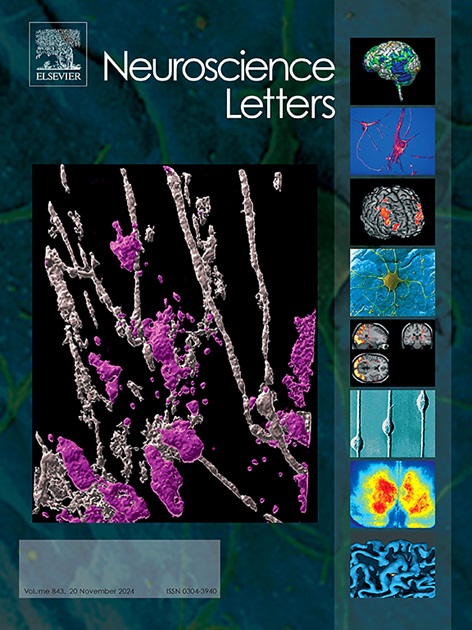稳定和不稳定轻触站立时比目鱼h反射兴奋性
IF 2
4区 医学
Q3 NEUROSCIENCES
引用次数: 0
摘要
当参与者闭着眼睛站立时,轻触可以减少摇摆。触摸参考的意外位移在大多数参与者中引起“假阳性”平衡校正。然而,这种反应仅在第一次位移中观察到,随后的位移引起手臂伸展反应。这表明,参与稳定轻触摇摆的感觉运动过程在一次试验中迅速适应。我们假设感觉运动行为的这种变化将反映在比目鱼h反射兴奋性的变化上。10名健康参与者分别在5种站立状态下(1)睁眼(EO), 2)睁眼(EOT), 3)闭眼(EC), 4)闭眼(ECT),以及5)闭眼接触意外反复移位的参考物(ECP))获得比目鱼肌h -反射和m -波以及背景肌肉活动。根据使用测力板记录的压力中心的运动,评估每种情况下的姿势摇摆。正如预期的那样,与EO、EOT和ECT相比,EC条件下h反射受到抑制,而摇摆参数增加。相比之下,ECP条件下的h反射与EC条件相比受到抑制,而摇摆参数没有类似地增加。我们认为,在ECP条件下h反射的抑制反映了感觉运动任务的推断变化;特别是从使用轻触参考作为外部空间参考转换到将触摸参考作为要维护的目标。本文章由计算机程序翻译,如有差异,请以英文原文为准。
Soleus H-reflex excitability during standing with stable and unstable light touch
Light touch reduces sway when participants stand with their eyes closed. Unexpected displacement of the touch reference induces a “false-positive” balance correction in most participants. However, this response is only observed with the first displacement, with subsequent displacements eliciting an arm-extension response. This suggests that the sensorimotor processes involved in stabilizing sway from light touch are rapidly adapted within a single trial. We hypothesized that this change in sensorimotor behaviour would be reflected in changes in the excitability of the soleus H-reflex. Soleus H-reflexes and M-waves, along with background muscle activity, were obtained from ten healthy participants during five standing conditions: 1) eyes open (EO), 2) eyes open with touch (EOT), 3) eyes closed (EC), 4) eyes closed with touch (ECT), and 5) eyes closed touching a reference that has been unexpectedly and repeatedly displaced (ECP). Postural sway was evaluated in each condition, inferred from the motion of the centre of pressure recorded with the use of a force plate. As expected, H-reflexes were suppressed, while sway parameters were increased, during the EC condition, when compared with EO, EOT and ECT. In contrast, H-reflexes during the ECP condition were suppressed comparable to the EC condition, while the sway parameters were not similarly increased. We suggest that the suppression of the H-reflex during the ECP condition reflects an inferred change in the sensorimotor task; specifically switching from utilizing the light touch reference as an external spatial reference, to engaging the touch reference as a target to be maintained.
求助全文
通过发布文献求助,成功后即可免费获取论文全文。
去求助
来源期刊

Neuroscience Letters
医学-神经科学
CiteScore
5.20
自引率
0.00%
发文量
408
审稿时长
50 days
期刊介绍:
Neuroscience Letters is devoted to the rapid publication of short, high-quality papers of interest to the broad community of neuroscientists. Only papers which will make a significant addition to the literature in the field will be published. Papers in all areas of neuroscience - molecular, cellular, developmental, systems, behavioral and cognitive, as well as computational - will be considered for publication. Submission of laboratory investigations that shed light on disease mechanisms is encouraged. Special Issues, edited by Guest Editors to cover new and rapidly-moving areas, will include invited mini-reviews. Occasional mini-reviews in especially timely areas will be considered for publication, without invitation, outside of Special Issues; these un-solicited mini-reviews can be submitted without invitation but must be of very high quality. Clinical studies will also be published if they provide new information about organization or actions of the nervous system, or provide new insights into the neurobiology of disease. NSL does not publish case reports.
 求助内容:
求助内容: 应助结果提醒方式:
应助结果提醒方式:


